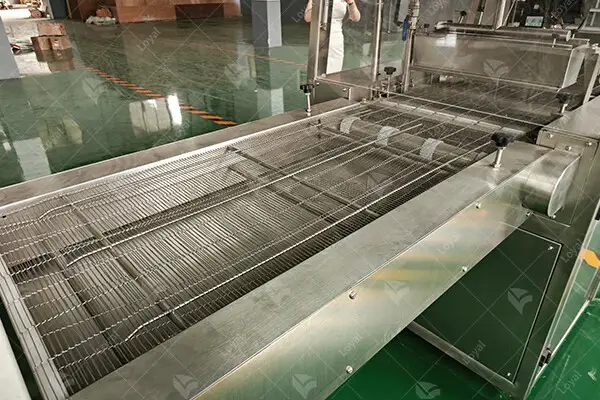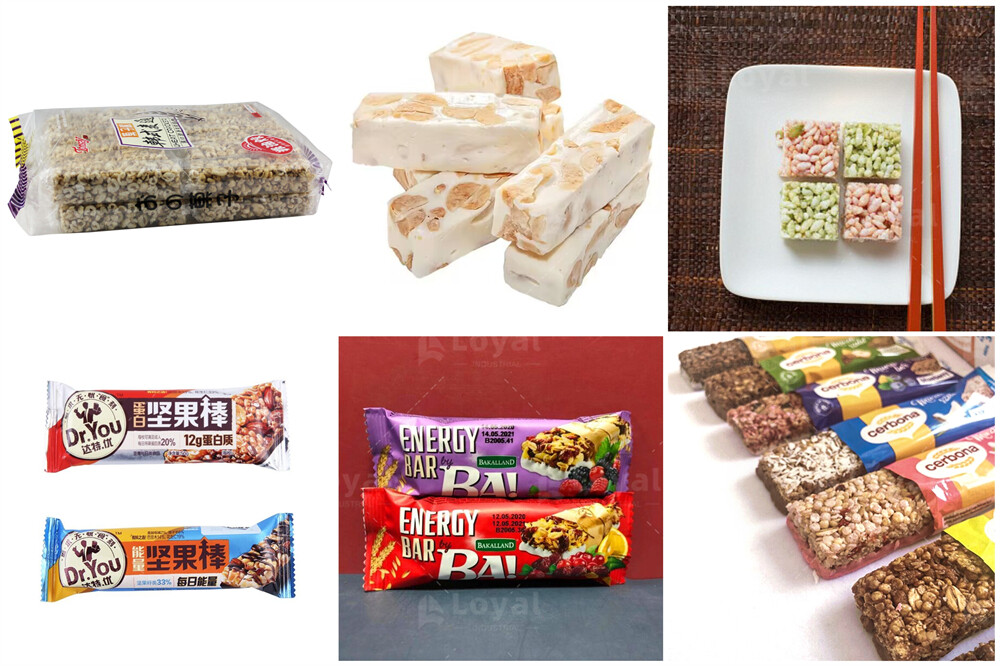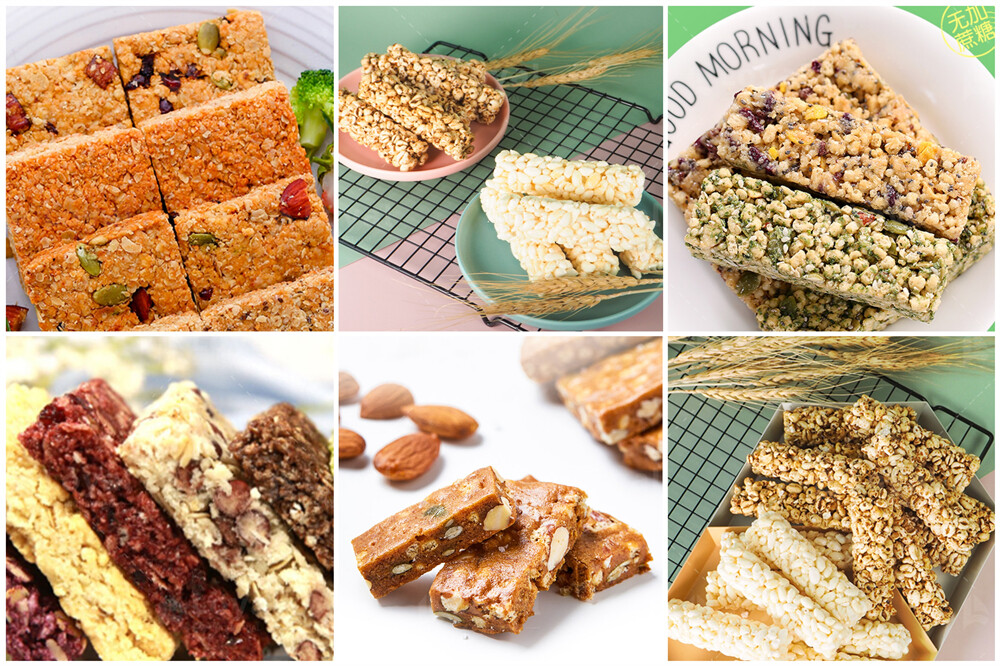The Ultimate Guide to Cereal Bar Line in 2024
Introduction
In 2024, the demand for cereal bars continues to rise, driven by consumers' growing preference for convenient, nutritious snacks. To meet this demand, the efficiency and innovation of the cereal bar line are more critical than ever. A cereal bar line encompasses the entire production process, from mixing ingredients to packaging the final product, ensuring consistency, quality, and scalability.
Cereal bar lines have evolved significantly over the years, incorporating advanced technology and automation to streamline production. Modern cereal bar lines are designed to handle diverse recipes, accommodate various shapes and sizes, and maintain high standards of hygiene and safety. These advancements not only enhance productivity but also reduce waste and operational costs.
As the industry progresses, understanding the components and functionality of a cereal bar line is essential for manufacturers aiming to stay competitive. This guide provides an in-depth look at the latest trends, technologies, and best practices in cereal bar line management, offering valuable insights for both new and established producers.
By investing in a state-of-the-art cereal bar line, manufacturers can ensure they are equipped to produce high-quality products efficiently and meet the ever-changing demands of the market.

Components of a Cereal Bar Line
A cereal bar line consists of various essential components, each playing a crucial role in ensuring efficient and high-quality production. Understanding these components is vital for optimizing performance and maintaining consistent output.
1. Mixing and Blending Equipment:
The first step in the cereal bar line involves mixing and blending ingredients. High-capacity mixers ensure uniform distribution of dry and wet ingredients, creating a homogenous mixture that forms the base of the cereal bar. Precision in this stage is critical for consistent flavor and texture.
2. Forming Machines:
Forming machines shape the mixture into uniform bars. These machines utilize advanced technology to ensure precise cutting and molding, allowing for consistent size and shape. Forming machines are designed for flexibility, accommodating various recipes and bar dimensions.
3. Cooling Conveyors:
Once formed, the cereal bars are transferred to cooling conveyors. These conveyors cool the bars gradually, helping to maintain their structure and prevent deformation. Proper cooling is essential to ensure the bars retain their intended texture and firmness.
4. Coating and Enrobing Equipment:
For cereal bars with additional coatings or toppings, enrobing equipment is used. This machinery evenly coats the bars with chocolate, yogurt, or other substances, enhancing the product’s appeal and taste. Precise control over the coating process ensures uniform coverage.
5. Cutting and Slicing Machines:
After cooling and coating, cutting and slicing machines divide the bars into individual portions. These machines are equipped with sharp blades and high-speed operations to achieve clean, accurate cuts, maintaining the integrity of each bar.
6. Packaging Machines:
The final component of the cereal bar line is the packaging machine. This equipment wraps and seals each bar in protective packaging, ensuring freshness and extending shelf life. Automated packaging systems increase efficiency and reduce manual labor.
7. Quality Control Systems:
Integrated quality control systems monitor each stage of the cereal bar line. These systems detect any deviations from set standards, ensuring that only bars meeting quality criteria proceed to the next stage. Advanced sensors and imaging technology play a crucial role in maintaining high standards.
8. Control Panel and Software:
Modern cereal bar lines are equipped with centralized control panels and software systems. These control systems allow operators to monitor and adjust various parameters, such as temperature, speed, and ingredient ratios. Advanced software integration ensures smooth operation and quick adjustments when needed.

Key Features of Modern Cereal Bar Lines
| Feature | Description |
| Automation and Efficiency | Advanced automation reduces manual intervention, increasing production speed and consistency. |
| Precision and Consistency | High-precision components ensure uniform size and weight of cereal bars, maintaining product quality. |
| Flexibility and Customization | Adjustable settings allow for the production of various cereal bar types and sizes, catering to diverse market needs. |
| Hygiene and Safety | Designed with easy-to-clean materials and adherence to food safety standards, ensuring product hygiene. |
| Energy Efficiency | Incorporation of energy-saving technologies reduces operational costs and environmental impact. |
| User-Friendly Interface | Intuitive controls and interfaces make it easy for operators to manage and monitor the production line. |
| Quality Control Systems | Integrated quality control systems detect and reject defective products, ensuring consistent quality. |
| Scalability | Modular design allows for easy expansion and adaptation to increasing production demands. |
| Durability and Reliability | Built with high-quality materials for long-term reliability and minimal downtime. |
| Smart Technology Integration | Use of IoT and AI for predictive maintenance and real-time monitoring, enhancing operational efficiency. |

Technological Innovations in Cereal Bar Lines
In 2024, the cereal bar line industry is witnessing remarkable technological advancements that are revolutionizing production processes. These innovations are designed to enhance efficiency, ensure consistent quality, and meet the growing demand for diverse and healthy cereal bar options.
Automation and Robotics
Automation and robotics play a pivotal role in modern cereal bar lines. Advanced robotic systems are integrated into various stages of production, from ingredient mixing to packaging. These systems not only increase production speed but also reduce human error, ensuring uniformity and precision in every batch. Automated lines can operate continuously with minimal downtime, significantly boosting overall productivity.
AI and Machine Learning
Artificial intelligence (AI) and machine learning algorithms are transforming quality control and predictive maintenance in cereal bar lines. AI-driven systems can analyze vast amounts of data in real-time, identifying potential issues before they escalate. This predictive capability minimizes downtime and maintenance costs, while ensuring that the machinery operates at peak efficiency. Machine learning also aids in optimizing recipes and production parameters, adapting to changing consumer preferences and ingredient variations.
IoT Integration
The Internet of Things (IoT) is increasingly integrated into cereal bar lines, providing real-time monitoring and data analytics. IoT-enabled sensors track critical parameters such as temperature, humidity, and equipment performance. This data is transmitted to a centralized system, allowing operators to make informed decisions quickly. IoT integration enhances traceability and transparency in the production process, meeting regulatory requirements and consumer demands for quality assurance.
Sustainable Technologies
Sustainability is a major focus in the development of new cereal bar lines. Energy-efficient machinery and processes are being adopted to reduce the carbon footprint of production. Innovations such as regenerative braking systems, which recover and reuse energy, are becoming standard. Additionally, the use of eco-friendly materials in packaging and machinery construction aligns with global sustainability goals, appealing to environmentally conscious consumers.
Advanced Mixing and Forming Equipment
Technological advancements in mixing and forming equipment are central to improving the quality and variety of cereal bars. New mixers with enhanced precision ensure a homogeneous blend of ingredients, crucial for consistent taste and texture. Advanced forming machines can handle a wide range of formulations, including those with high inclusions of nuts, fruits, and other delicate ingredients. This flexibility allows manufacturers to innovate with new products and cater to diverse dietary needs.

Quality Control and Assurance
Ensuring consistent quality in cereal bar production is paramount for maintaining consumer trust and meeting regulatory standards. A well-designed cereal bar line integrates advanced quality control and assurance mechanisms to achieve these goals.
1. Automated Inspection Systems:
Modern cereal bar lines incorporate automated inspection systems that use sensors and cameras to monitor the production process in real-time. These systems detect defects such as size irregularities, surface imperfections, and ingredient inconsistencies, ensuring only products meeting stringent quality criteria proceed down the line.
2. Precision Weighing and Mixing:
Accurate ingredient measurement is crucial for product consistency. Advanced cereal bar lines feature precision weighing and mixing equipment that guarantees each batch contains the exact proportions of ingredients. This precision helps maintain uniformity in taste, texture, and nutritional content.
3. Temperature and Humidity Control:
Maintaining optimal environmental conditions is essential for the production of high-quality cereal bars. State-of-the-art cereal bar lines are equipped with sophisticated temperature and humidity control systems that ensure the manufacturing environment remains within specified parameters, preventing issues like ingredient degradation and inconsistent product texture.
4. Regular Calibration and Maintenance:
To sustain the accuracy of quality control measures, regular calibration and maintenance of equipment are mandatory. Scheduled checks and routine servicing help identify potential problems before they impact product quality, ensuring the cereal bar line operates at peak efficiency.
5. Data Logging and Analysis:
Modern cereal bar lines use data logging systems to record production parameters and quality metrics. Analyzing this data helps identify trends and pinpoint areas for improvement. Continuous monitoring and analysis facilitate proactive quality management, leading to consistent product excellence.
6. Compliance with Food Safety Standards:
Adhering to food safety regulations is non-negotiable. Cereal bar lines are designed to comply with international food safety standards, including HACCP, ISO 22000, and GMP. Implementing these standards ensures that every aspect of production, from raw material handling to final packaging, meets the highest safety and quality requirements.
By integrating these advanced quality control and assurance measures, cereal bar lines in 2024 not only meet but exceed industry standards, delivering products that are safe, nutritious, and consistently high in quality.

Maintenance and Troubleshooting
Proper maintenance and troubleshooting are essential for ensuring the efficiency and longevity of a cereal bar line. Here are some expert tips:
1. Regular Cleaning and Sanitation:
Maintaining cleanliness is critical. Regularly clean all parts of the cereal bar line to prevent contamination and buildup of ingredients. This not only ensures product safety but also helps in maintaining the efficiency of the equipment.
2. Scheduled Inspections:
Conduct routine inspections to identify any wear and tear or potential issues. Pay particular attention to moving parts, conveyor belts, and cutting blades. Early detection of problems can prevent costly downtime.
3. Lubrication of Moving Parts:
Regularly lubricate all moving parts as per the manufacturer's guidelines. Proper lubrication reduces friction and wear, ensuring smooth operation of the cereal bar line.
4. Calibration and Adjustment:
Periodically calibrate the equipment to ensure it is operating within the specified parameters. Proper calibration ensures consistent product quality and optimal machine performance.
5. Common Troubleshooting Tips:
- Product Sticking: If cereal bars stick to the molds or conveyors, check the application of release agents or adjust the processing temperature.
- Uneven Cutting: Ensure cutting blades are sharp and properly aligned. Replace blades that show signs of dullness or damage.
- Machine Jams: Inspect for blockages or buildup of ingredients that could cause jams. Clear any obstructions immediately.
6. Preventive Maintenance Schedule:
Implement a preventive maintenance schedule based on the manufacturer's recommendations. This proactive approach can help in identifying potential issues before they escalate into major problems.
7. Operator Training:
Ensure that all operators are properly trained in both the operation and basic maintenance of the cereal bar line. Well-trained operators can quickly identify and address minor issues, reducing the risk of significant downtime.
8. Record Keeping:
Maintain detailed records of all maintenance activities, including inspections, repairs, and part replacements. These records help track the performance of the cereal bar line and plan future maintenance activities effectively.

Customization and Scalability
In the dynamic landscape of cereal bar production, the ability to customize and scale your cereal bar line is crucial for meeting diverse market demands. Modern cereal bar lines are designed with flexibility in mind, allowing manufacturers to adapt to various product specifications and production volumes efficiently.
Customization:
Customization options in cereal bar lines are essential for catering to different consumer preferences and dietary requirements. Advanced cereal bar lines offer adjustable settings that enable manufacturers to modify ingredient ratios, bar sizes, shapes, and textures. This adaptability ensures that a single production line can produce a wide range of products, from high-protein bars to low-sugar options.
Innovative features such as modular components and interchangeable molds further enhance customization capabilities. Manufacturers can easily switch between different product configurations without significant downtime, thus maximizing production efficiency and meeting market trends swiftly.
Scalability:
Scalability is another critical aspect of modern cereal bar lines. As consumer demand grows, the ability to scale production efficiently becomes a competitive advantage. Advanced cereal bar lines are designed to handle varying production capacities, from small batches for niche markets to large-scale production for mainstream distribution.
Scalable cereal bar lines incorporate automated systems and advanced robotics, which streamline the production process and reduce the need for manual intervention. These technologies not only increase output but also maintain consistent product quality, ensuring that each bAdditionally, integrated software solutions provide real-time monitoring and data analysis, enabling manufacturers to optimize production processes and scale operations seamlessly. This capability is particularly beneficial for responding to market fluctuations and seasonal demands without compromising on quality or efficiency.

Environmental and Sustainability Considerations
In 2024, the cereal bar line industry is increasingly focused on sustainability and environmental responsibility. Modern cereal bar lines are designed to minimize environmental impact while maintaining high efficiency and product quality.
Energy Efficiency:
Cereal bar line manufacturers are prioritizing energy-efficient technologies. Advanced equipment incorporates energy-saving features such as optimized motors, energy recovery systems, and smart controls that adjust power consumption based on real-time production needs. These innovations reduce overall energy usage, lowering operational costs and carbon footprint.
Waste Reduction:
Minimizing waste is another crucial aspect of sustainable cereal bar lines. Equipment is now equipped with precision cutting and forming technologies that reduce material wastage. Additionally, automated systems ensure consistent product quality, reducing the number of defective products that need to be discarded. Manufacturers are also exploring the use of biodegradable and recyclable materials for packaging, further contributing to waste reduction.
Water Conservation:
Water conservation measures are integral to modern cereal bar lines. New cleaning systems use less water and incorporate closed-loop systems to recycle and reuse water during production. These systems not only conserve water but also reduce wastewater discharge, promoting a more sustainable manufacturing process.
Sustainable Materials and Construction:
The materials used in constructing cereal bar lines are now more sustainable. Manufacturers are opting for durable, long-lasting materials that require less frequent replacement. Additionally, there is a growing trend towards using recycled and eco-friendly materials in the construction of machinery components.
Regulatory Compliance:
Compliance with environmental regulations is essential for cereal bar manufacturers. Modern cereal bar lines are designed to meet stringent environmental standards, ensuring that production processes do not harm the environment. Compliance with regulations also enhances the brand's reputation and meets consumer demand for eco-friendly products.
Innovation and Future Trends:
The future of cereal bar lines will see continued innovation in sustainability. Emerging technologies such as renewable energy integration, advanced waste management systems, and further improvements in material science will drive the industry towards even greater environmental responsibility.

Reference
The following are five authoritative foreign literature websites in the field of Industrial food machinery:
1. Food Engineering Magazine
Website: https://www.foodengineeringmag.com/
2.Food Processing Magazine
Website: https://www.foodprocessing.com/
3.Journal of Food Engineering
Website:https://www.journals.elsevier.com/journal-of-food-engineering
4. Food Manufacturing Magazine
Website:https://www.foodmanufacturing.com/
5. International Journal of Food Science & Technology
Website:https://onlinelibrary.wiley.com/












